Exploring Bird Call Recognition Technologies
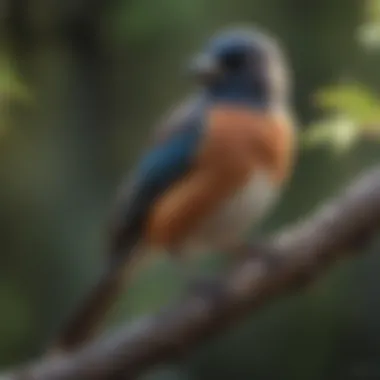
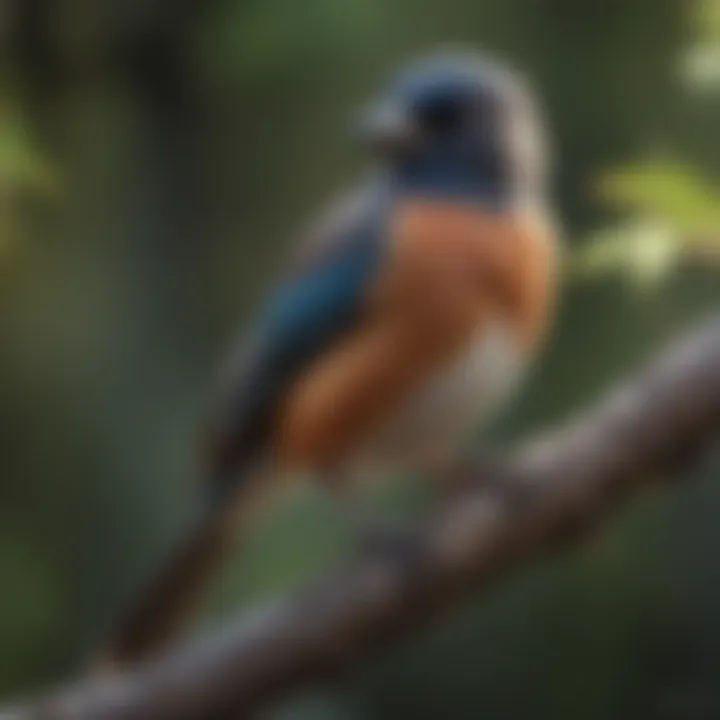
Intro
Bird calls are more than just lovely sounds drifting through the trees; they are fundamental in avian communication. For bird enthusiasts, the ability to recognize and understand these calls opens up a vibrant world of interaction with nature. The art and science of bird call recognition delve into complex algorithms that can do everything from identifying songbirds to notifying enthusiasts about the presence of particular species.
This article unravels the layers of bird call recognizers, focusing on the mechanics behind the technology, its practical applications, and its implications for ecological research. Not only does this knowledge enhance our appreciation for feathered friends, but it is also pivotal for conservation efforts. With a strong foundation in both technical and biological perspectives, readers will gain insights that prove invaluable, whether they're seasoned birdwatchers or new pet bird owners.
As we journey through the intricacies of bird call recognition, we'll explore various facets of this field. We will discuss its significance, the technological frameworks in play, and how enthusiasts can harness this knowledge for both ecological benefits and improved pet care.
Let’s get started on this enlightening adventure into avian communication and the marvel of modern technology.
Prelims to Bird Call Recognition
Birds communicate a wealth of information through their calls and songs, and understanding this form of avian communication is crucial for both enthusiasts and professionals alike. Bird call recognition is the gateway into deciphering this complex language, opening up avenues for research, conservation, and personal enjoyment in bird-keeping. In essence, it’s about more than just recognizing different chirps and tweets; it’s about embedding ourselves within the natural world, fostering deeper connections with the feathered creatures that share our environment.
This section will illuminate what bird call recognition really means and provide a historical context that helps situate the modern technology used in this fascinating field. By grasping the significance of identifying various bird calls, readers can appreciate the broader implications it holds, from biodiversity studies to the enriching experience of caring for pet birds.
Defining Bird Call Recognition
Bird call recognition refers to the capability to identify, analyze, and interpret the sounds made by birds. This could range from a simple chirp to a complex song. Basically, it involves a set of methodologies and technologies designed to discern one bird’s voice from another.
The recognition process can be split into several key components:
- Sound Recording: Capturing the calls using microphones in different environments.
- Signal Processing: Isolating sounds from background noise to ensure clarity.
- Feature Extraction: Identifying distinct characteristics of the calls, such as duration and frequency.
- Classification: Using algorithms, particularly machine learning, to categorize the sounds into species.
While this might sound straightforward, numerous challenges lie beneath. For example, the same species might produce varying calls depending on factors like habitat, time of year, or individual personality.
Historical Context of Avian Communication Studies
The study of avian communication is not a new concept. In fact, it has roots stretching back centuries. Early naturalists, including Charles Darwin, observed and documented bird calls, noting their importance in mating rituals and territory establishment. These initial observations lay the groundwork for more systematic studies that followed.
As the field of bioacoustics emerged in the 20th century, researchers began to employ technology to examine bird sounds more rigorously. The initial efforts involved simple recording devices and manual analysis, but technological advancements have dramatically reshaped our approach since then. Digital sound analysis tools now allow for a more sophisticated understanding of calls.
In recent decades, the advent of machine learning introduced a further leap in capability. Complex algorithms can now analyze extensive databases of bird calls with remarkable accuracy, allowing both researchers and casual bird watchers to engage with avian communication in ways previously thought impossible.
In summary, understanding bird call recognition not only enriches our appreciation of avian life but also reinforces the vital links between technology, ecology, and human interaction with nature. As we venture further into this subject, we will uncover the significance of bird call recognition in greater detail.
Importance of Bird Call Recognition
Bird call recognition is not just a nifty tech trend; it’s a critical tool that can contribute meaningfully to ecological understanding and conservation efforts. As the world teeters on the brink of biodiversity loss, the ability to identify and monitor bird calls becomes increasingly valuable. Bird calls provide signals about the health of ecosystems, functioning as indicators of environmental change.
From the perspective of researchers, be it ornithologists or conservation biologists, accurately recognizing and interpreting these calls helps to track bird populations and assess their habitats. Such insights can guide strategies for protecting endangered species or restoring habitats. For instance, mapping where certain calls are most prevalent can shine light on where conservation initiatives may be most needed.
Implications for Biodiversity and Conservation
The implications of bird call recognition extend well beyond basic interest in hearing songs of feathered friends. By understanding these calls, we can gather data on various species and their behaviors, which is vital for biodiversity conservation.
- Monitoring Populations: Utilizing technology for bird call recognition allows researchers to monitor changes in bird populations over time. If populations are declining, conservationists can investigate and implement solutions.
- Habitat Requirements: Different species often have unique habitat requirements signaled through their calls. Recognizing these can provide vital insights into what environments need protection.
- Ecosystem Health: Birds are often seen as indicators of a healthy ecosystem. If certain calls are less common, it might suggest larger environmental issues that need addressing.
In a nutshell, being able to decipher bird calls is akin to having a roadmap of biodiversity. It allows stakeholders to make informed decisions that can lead to more effective conservation strategies.
Enhancing the Human-Bird Relationship in Bird Keeping
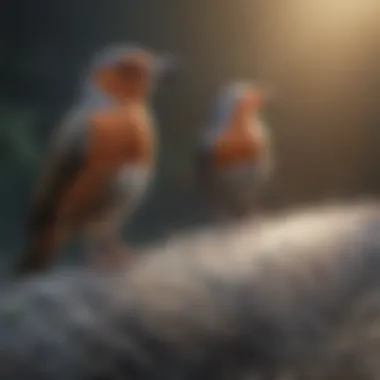
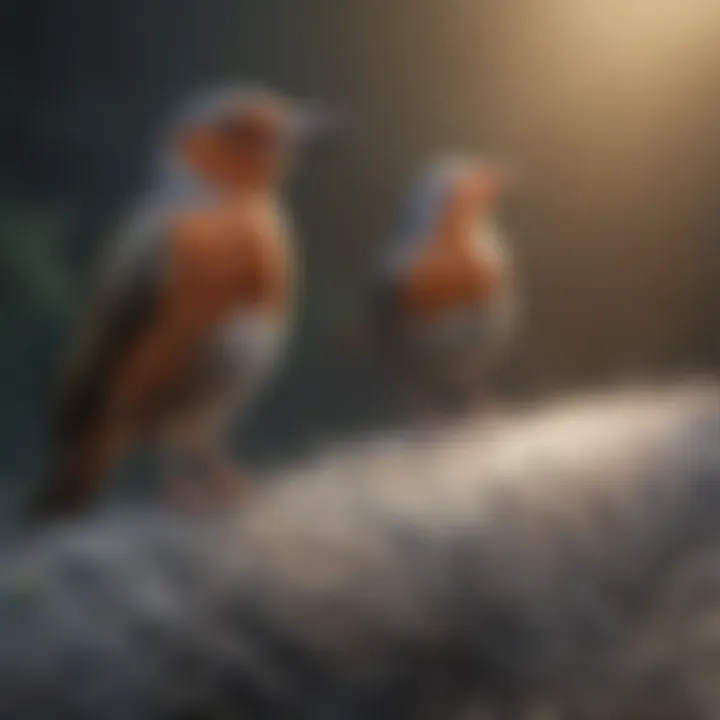
The influence of bird call recognition can also transform the way pet bird owners engage with their feathered companions. Understanding the various calls and sounds birds make can foster a deeper relationship based on insight and empathy.
- Communication: Bird owners can learn to recognize their pets’ calls, leading to better understanding of their needs and moods. When owners can respond to specific calls, it doesn’t just aid in care, but can strengthen the bond between human and bird.
- Enrichment: Recognizing calls can pave the way for enriching the birds' environment. Providing toys or activites that resonate with the calls they make can lead to happier, healthier pets.
- Behavioral Insights: Knowing why a bird makes a specific sound helps owners address behavioral issues more effectively. For instance, if a bird is constant in its alarm calls, it may point to stress or dissatisfaction with their surroundings.
Technical Aspects of Bird Call Recognition Systems
Understanding the technical aspects of bird call recognition systems is crucial for tapping into the fine nuances of avian communication. These systems do not work in isolation; they rely heavily on intelligently designed algorithms, effective sound wave analysis techniques, and robust database management. Each of these components plays a pivotal role in ensuring that bird calls are not just heard but accurately interpreted and categorized. As technology continues to evolve, so does the complexity and capability of these systems, enabling researchers and bird enthusiasts alike to make deeper insights into the world of birds.
Algorithm Design and Machine Learning Applications
The heart of any bird call recognition system lies in its algorithm design. At its core, these algorithms are a set of rules or instructions that a computer follows to analyze audio data. When we think about bird calls, we can’t overlook how diverse and intricate they are, and this is where machine learning (ML) comes into play.
Algorithms are developed to "learn" from existing datasets of bird calls. For instance, supervised learning frameworks utilize annotated datasets, where each call is labeled according to its species. This is akin to teaching a child; the more examples they see, the better they get at identifying similar sounds.
A powerful example of this application is convolutional neural networks (CNNs), which can differentiate between sounds that may appear similar to the human ear. As these systems are trained on vast arrays of audio recordings—like the songs of the American Robin or the distinct calls of the Common Loon—they become adept at recognizing differences in pitch, length, and rhythm.
Moreover, continual learning systems keep adapting to new data, making it easier for them to utilize real-time audio inputs from smartphones or field recorders.
Sound Wave Analysis Techniques
When it comes to sound waves, understanding their characteristics is key to discerning the type of bird call being recorded. Techniques used in sound wave analysis can range from simple visual representations—such as spectrograms—to more complex analyses like Fourier transforms.
- Spectrograms display the frequency, intensity, and duration of sounds. These visual cues can help ornithologists decipher which species is calling, as each bird typically has a unique sound signature.
- Fourier Transform is a method that decomposes a sound wave into its constituent frequencies. This technique transforms the complex call into a series of sine waves, making it easier to analyze specific frequencies that may correspond to particular species.
It's like breaking down a symphony to understand which instruments are playing at any given moment. By analyzing frequency patterns, algorithms can effectively filter out environmental noise or sounds from other species, leading to more accurate identifications.
Database Management for Bird Calls
With extensive data comes the need for efficient database management. A robust database serves as the backbone for all the aforementioned technologies. It houses an extensive collection of bird call recordings and associated metadata, including geographical locations, times of recording, and call classifications.
Having such a database allows researchers to:
- Store large volumes of data from various locations and seasons,
- Access historical records to track changes in bird populations or behaviors over time,
- Share data with other researchers, creating a community-driven approach to avian studies.
Effective database management is not just about storing data; it's about making it accessible for future analysis and research. Whether it’s a seasoned ornithologist or a novice birdwatcher, the ability to retrieve and utilize this data plays a significant role in advancing our understanding of avian communication.
"A well-curated database can transform raw sound recordings into insights that facilitate conservation efforts and enrich birdwatching experiences."
By understanding these technical elements, bird enthusiasts and conservationists can significantly benefit from bird call recognition systems, paving the way for enhanced ecological research and a deeper connection with the avian world.
Challenges in Bird Call Recognition
Recognizing bird calls is no walk in the park. While the technology has improved leaps and bounds, it’s still a rocky road filled with pitfalls that can hinder accurate identification. Understanding these challenges is crucial, especially for those in conservation, research, and even the casual bird enthusiast, as it affects the efficacy of various applications. Proper recognition goes beyond just distinguishing sounds; it intertwines with factors like environmental conditions and the inherent variability among bird species. Here, let's break down some of the significant hurdles faced in bird call recognition systems.
Environmental Noise Interference
Picture a serene forest – birds chirping, leaves rustling, perhaps a gentle brook babbling nearby. Now, imagine trying to pick out a specific call amid all that natural symphony. Environmental noise is one of the primary enemies in bird call recognition, and it can make identifying a call akin to finding a needle in a haystack.
Most bird call recognizers are designed to isolate and identify calls, but they often struggle when competing sounds are swirling around. Common sources of interference include:
- Urban noise: Traffic, construction, and human chatter can drown out subtle bird calls.
- Weather: Wind and rain create unpredictable audio conditions that muddle sounds.
- Overlapping calls: During mating seasons, many birds call simultaneously, complicating the job.
To address these issues, engineers and researchers use various signal processing techniques like filtering and noise reduction algorithms. However, it’s a constant battle, and complete silence is a luxury rarely afforded in nature.
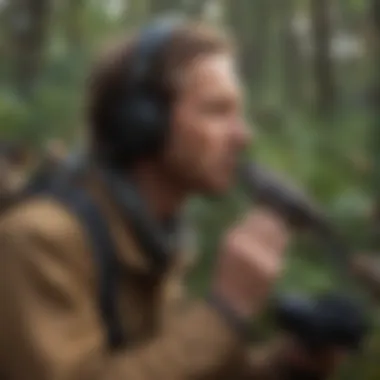
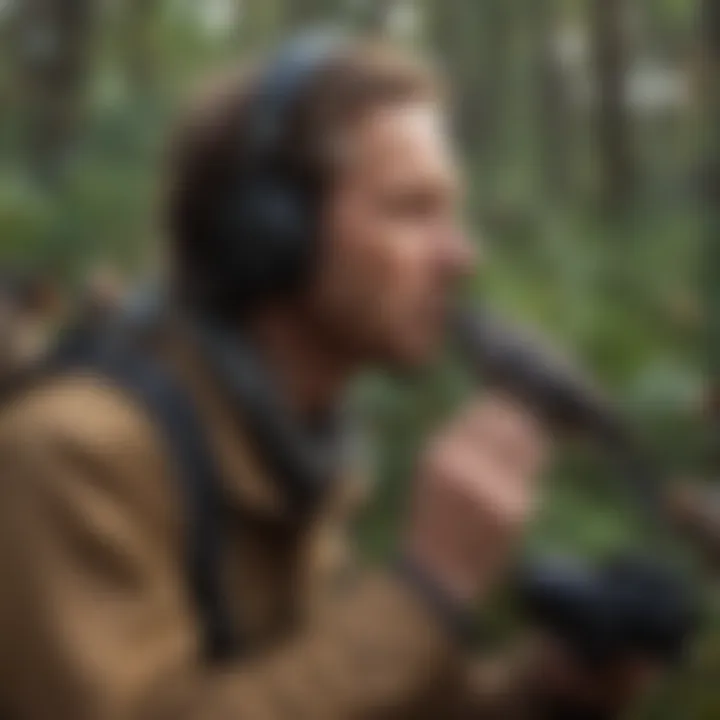
"Bird calls are the soundtrack of nature; noise pollution is the jarring interference that clouds our understanding."
Variability in Bird Calls Across Species
Within the avian world, variety is indeed the spice of life. Each species has its unique vocalizations, often influenced by factors like habitat, age, and even regional dialects. This variability presents another significant challenge for bird call recognition systems.
Some critical considerations include:
- Species-Specific Calls: A common species like the American Robin has a wide range of calls which can make it hard to distinguish one from another. Some calls may sound almost identical.
- Regional Variations: Just like people have accents, birds have different dialects. The same species may have distinct calls based on their geographical location.
- Age and Maturity: Young birds may not produce calls that are consistent with their adult counterparts. Their calls may resemble those of other species or lack the clarity necessary for accurate identification.
To enhance recognition accuracy, datasets must incorporate a diverse range of call samples across different contexts. This often means accruing recordings from various locations, seasons, and maturity stages, which presents logistical challenges for researchers and developers. The variability in bird calls not only complicates the technical recognition process but also adds an intelligent layer for enthusiasts to appreciate the rich tapestry of avian communication.
Applications of Bird Call Recognition Technology
Bird call recognition technology is more than just a tool for bird watchers; it plays a significant role in various fields including conservation, scientific research, and even recreational activities for enthusiasts. The ability to accurately identify and classify bird calls allows for a plethora of applications that have meaningful implications for both ecology and society.
One key benefit of these technologies is their contribution to biodiversity research. By systematically recording and analyzing bird calls, researchers can monitor bird populations and track changes over time. This provides critical data for conservation efforts, especially for species that are at risk or threatened. Moreover, having reliable data on avian diversity assists in habitat management and restoration initiatives.
"The sounds of birds are not just background noise; they are the heartbeat of ecosystems."
Another essential aspect of bird call recognition technology is its integration into mobile applications. These apps make it easier for everyday nature lovers to engage with avian wildlife. Users can identify a bird just by its call, making it a fun and educational experience. Additionally, the gamification of observing birds enhances user interaction and encourages new generations to take an interest in nature and conservation efforts.
In the realm of avian care practices, bird call recognition can be invaluable as well. For pet bird owners or breeders, understanding the nuances of a pet bird’s vocalizations can lead to better care and management decisions. For instance, a change in the bird's call may indicate stress or health issues. Thus, leveraging technology to detect these variations could encourage timely interventions.
Overall, the applications of bird call recognition technology are vast and varied. They improve our understanding of avian communications and promote conservation initiatives that could otherwise go unnoticed. As technology evolves, the opportunity to apply these advancements will continue to grow, providing exciting possibilities for researchers and bird lovers alike.
Research and Monitoring in Field Studies
Field studies benefit immensely from this technology. With portable recording devices and sophisticated algorithms, researchers can deploy these tools in various habitats to gather extensive audio data. This data can then be analyzed to produce insights about the health and diversity of wildlife populations.
The greater the accuracy of these systems in recognizing species-specific calls, the better the understanding of their distribution patterns, breeding behaviors, and responses to environmental changes. Such insights are crucial for timely and effective conservation measures.
Development of Mobile Applications for Bird Enthusiasts
The intersection of technology and nature has birthed a suite of mobile applications aimed at bird enthusiasts. These apps typically combine sound recognition software with user-friendly interfaces to facilitate immediate bird call comprehension.
- Identification: Users can record a bird's sound and receive immediate feedback on its species.
- Education: Many applications include educational content, such as details about the bird’s habitat, diet, and nesting behavior.
- Community Engagement: Social features often include forums or sharing capabilities, promoting community and awareness among bird lovers.
Applications like Merlin Bird ID stand as great examples, offering users tools to help identify birds through calls, while also promoting citizen science.
Integration into Avian Care Practices
For pet bird owners, understanding bird calls can be crucial for proper care. Birds communicate a range of feelings through their vocalizations, from happiness to stress or discomfort. Recognizing these signs can lead to:
- Better Health Management: Identifying stress in birds early can aid in preventing potential health issues.
- Fostering Bonding: Understanding bird sounds allows pet owners to create an environment of comfort for their pets, enhancing the human-bird relationship.
- Creating Enriching Experiences: Integrating sounds from their natural habitats into the living environment of pet birds can mimic their natural conditions, promoting well-being.
Case Studies in Bird Call Recognition
Case studies in bird call recognition provide concrete instances of how this technology contributes to conservation and research efforts. The real-world applications of these systems help elucidate their importance, showcasing both the challenges and successes encountered along the way. By analyzing specific instances, we can appreciate the practical implications of new technologies and methods in avian communication.
Successful Implementations in Conservation
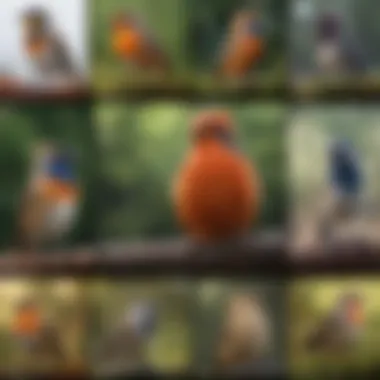
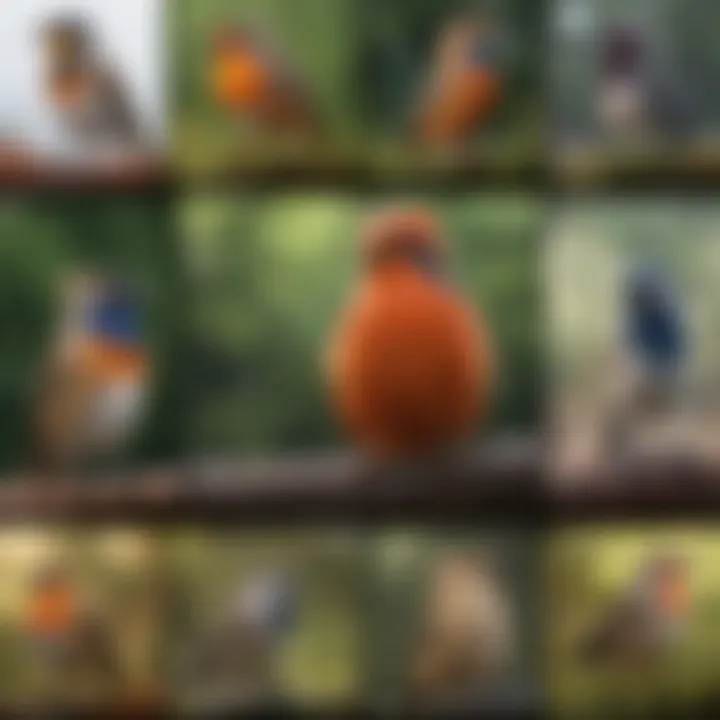
Conservationists have increasingly turned to bird call recognition systems as pivotal tools in their efforts to preserve avian populations. For instance, projects in the Amazon rainforest demonstrate how these systems monitor endangered species. In one particularly notable study, researchers utilized automatic recognition software to identify the calls of the Spix's Macaw, a species brought back from the brink of extinction. By gathering data on their vocalizations, conservationists not only tracked population sizes but also monitored breeding habits and habitat preferences. This information proved essential for creating tailored conservation policies that prioritize the species' recovery.
Bird call recognition can also reveal how well these birds adapt to changing environments. Key points regarding successful implementations include:
- Data Gathering: Automated recognition systems collect large amounts of vocalization data, which is crucial for understanding species-specific behaviors.
- Real-Time Monitoring: Conservationists can monitor bird populations in real-time, quickly addressing any threats or declines.
- Community Engagement: Such projects raise awareness among local communities, allowing them to participate actively in conservation efforts.
"Technology is not just a tool for scientists; it's a bridge to understanding and connecting with nature on a deeper level."
Innovative Uses in Avian Research
Meanwhile, research institutions are adopting bird call recognition for groundbreaking studies into avian behavior and ecology. In an innovative project at the California Institute of Technology, researchers set out to monitor the vocal patterns of the California Quail to study their interactions in social groups. By employing machine learning algorithms, they analyzed thousands of hours of audio recordings. This level of analysis was previously unfeasible due to the sheer volume of data.
Some of the notable applications include:
- Behavioral Studies: Researchers found that the calls played a significant role in establishing social hierarchies among groups. Different calls correlated with specific behaviors, providing a nuanced understanding of quail communication.
- Environmental Impact Assessments: The technology also served in studies evaluating how environmental changes affect different species, giving insights into the impacts of climate change on bird populations.
- Cross-Species Comparisons: With data compiled over various regions and species, researchers can analyze how different factors influence communication strategies in avian life.
These case studies illustrate the transformative power of bird call recognition technologies. They not only offer profound insights into avian communication but also bolster efforts aimed at conservation and ecological understanding, effectively ensuring that the delicate balance of our ecosystems remains intact.
The Future of Bird Call Recognition
The landscape of bird call recognition is on the cusp of a significant evolution. As technology advances, the methodologies for understanding avian communication are becoming more sophisticated. This section explores the elements shaping the future of bird call recognition and highlights the benefits that can emerge from these innovations.
Emerging Technologies and Their Potential Impact
New technologies are set to revolutionize the way we study bird calls. For instance, advancements in artificial intelligence and machine learning are crucial in creating more accurate identification systems.
- Deep Learning Models: These are capable of analyzing vast datasets of bird calls, improving recognition accuracy significantly. The algorithms learn from a range of sounds, making them robust against variations in the calls of different species.
- Cloud Computing: Storing and processing audio data on the cloud allows researchers to access a larger pool of data without being constrained by hardware limitations. This opens up myriad possibilities for collaborative research and better resources in avian studies.
- Internet of Things (IoT) Devices: The future will likely see IoT-enabled devices that can monitor bird calls in real-time. Such systems can provide immediate feedback and aid in conservation efforts efficiently.
"Technology is not just a tool; it’s the bridge to a deeper understanding of the natural world."
The integration of these novel technologies is poised to facilitate breakthroughs in the field of bird communication, enabling scientists and enthusiasts to gather and analyze data in ways previously thought impossible.
Predictions for the Field of Avian Communication
Looking ahead, several trends are likely to shape how we comprehend bird calls and their implications for conservation and ecological balance:
- Increased Public Engagement: As mobile applications and community-driven platforms for bird call recognition proliferate, more individuals, from amateur bird watchers to seasoned ornithologists, will contribute data. This participation can enrich the databases available for research.
- Refined Analytical Tools: Future analytics will incorporate sophisticated filters that can sift through environmental noise, allowing for clearer identification of bird calls even in bustling natural settings.
- Enhanced Conservation Efforts: Understanding bird calls in the context of their environment can illuminate changes in populations and habitats. This can help direct conservation efforts more effectively, ensuring that vulnerable species receive necessary attention.
- Collaboration Across Disciplines: The intersection of technology, biology, and environmental science will foster interdisciplinary collaborations. These partnerships can lead to innovative studies and awareness campaigns that highlight the importance of avian communication in our ecosystem.
In summary, the future of bird call recognition holds immense promise, with the potential to deepen our understanding of avian communication and play a critical role in conservation strategies.
Closure
The conclusion of this article holds significant weight, bringing together all the threads of bird call recognition discussed throughout the sections. This is not merely a wrap-up; it's an essential reflection on how the understanding of bird calls not only enhances our knowledge of avian behavior but also underpins crucial conservation strategies. The interplay between technology and biology in bird call recognition paves the way for new discoveries that benefit research and improve the well-being of pet birds in their domestic environments.
Bird call recognition unequivocally plays a pivotal role in fostering an appreciation of nature. By understanding the calls of birds, one can connect deeper with the environment, leading to more informed actions that promote biodiversity. This is particularly relevant in today’s world, where many species face the threat of extinction due to habitat loss and climate change. Advancements in technology—particularly in machine learning and sound analysis—are integral in bridging the gap between avian communication and human understanding.
Recapping the Importance of Bird Call Recognition
Bird call recognition serves as a bridge connecting humans with the avian world. It helps discern nuances in communication among various species, providing insights into their social structures and interrelationships. Each chirp, whistle, and trill can tell a story, indicating everything from mating rituals to territorial disputes. A keen understanding of these vocalizations fosters a greater appreciation and respect for wildlife.
Furthermore, accurate bird call recognition contributes significantly to conservation efforts. Monitoring bird populations through their calls can yield important data regarding species health and mating behaviors, informing wildlife management practices. For instance, using call identification in remote areas might help researchers track endangered species without intrusive measures. Thus, one can see how learning to recognize bird calls is not just an academic exercise; it’s a vital tool in the survival of many species.
Call to Action for Bird Enthusiasts and Conservationists
For those with a passion for birds—whether you’re a seasoned ornithologist or a budding bird lover—embracing bird call recognition can be a rewarding endeavor. This isn't just for experts; every individual can contribute to avian conservation through observation and appreciation. Here’s how you can get involved:
- Start with Learning: Familiarize yourself with local bird calls. Mobile apps, field guides, and online resources like Wikipedia and Britannica are excellent starting points.
- Engage with Communities: Join online forums, Facebook groups, or communities on platforms like Reddit dedicated to bird watching and call recognition. Sharing experiences and tips can enrich your journey.
- Participate in Conservation Projects: Consider donating your observation data to local conservation organizations. Many rely on citizen science to monitor bird populations and behaviors.
Embracing the world of bird call recognition strengthens not just our bond with avian creatures, but also our role in ensuring their preservation. Recognize, appreciate, and protect the remarkable tapestry of life that surrounds us.















